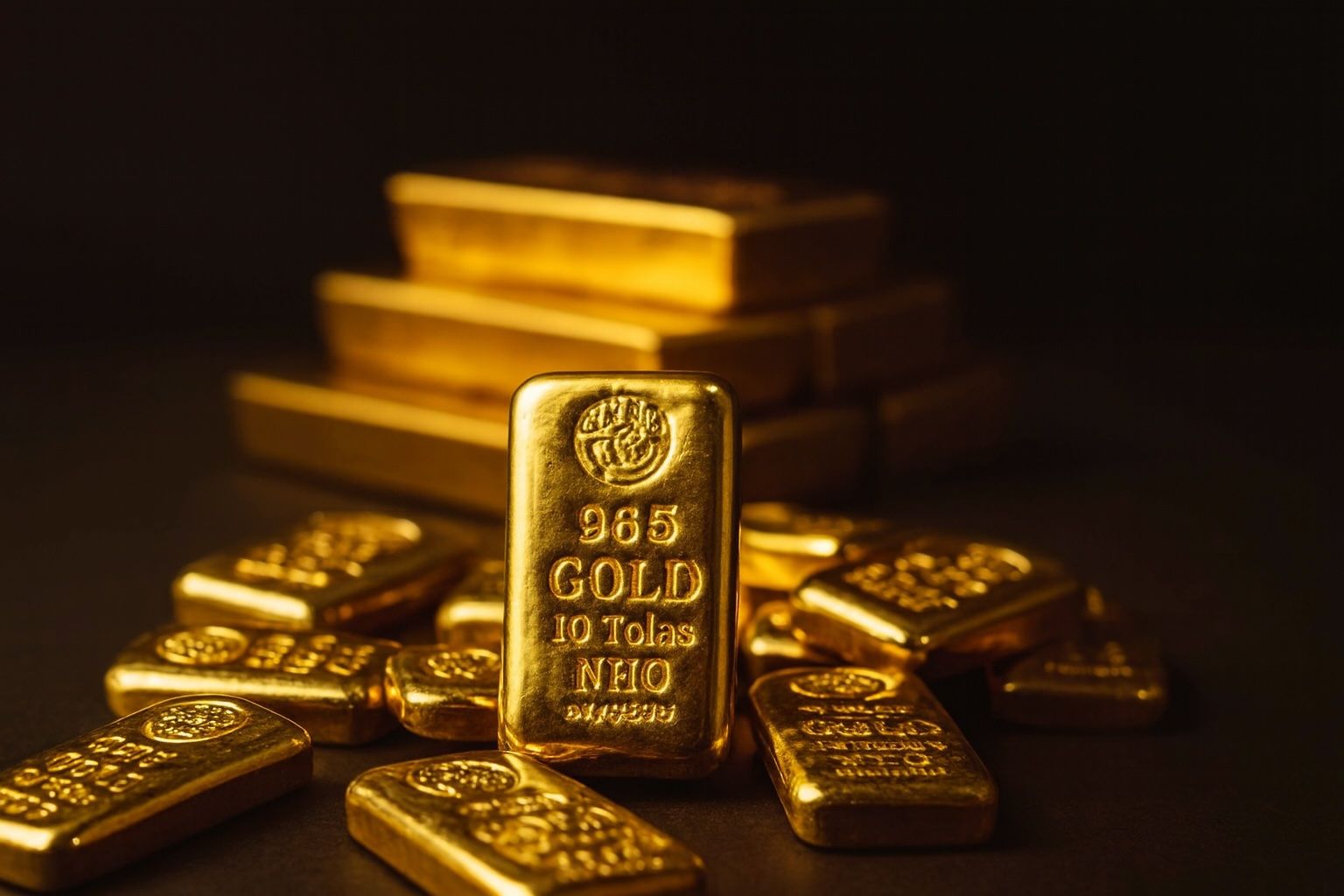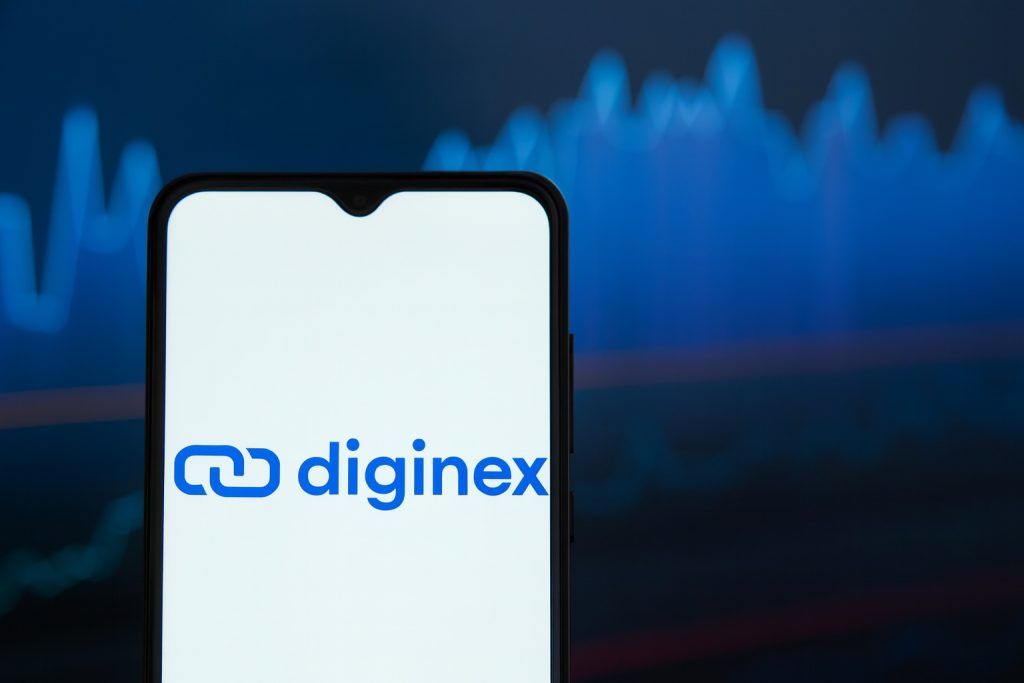- Historic Price Milestone: Gold prices have surged to all-time highs, with U.S. gold futures topping $4,003 per ounce intraday – the first time ever above the $4,000 mark [1]. Spot gold also jumped to about $3,960/oz on the news [2]. The precious metal has now gained roughly 45–50% in 2025, putting it on pace for its strongest year since 1979 [3].
- Safe-Haven Frenzy: Investors are flocking to gold as a classic safe-haven amid global turmoil. A U.S. government shutdown (now in its second week) has sown economic uncertainty and weakened the U.S. dollar, driving anxious investors into bullion [4] [5]. Likewise, geopolitical crises – from the ongoing Russia-Ukraine war to fresh conflict in the Middle East – are stoking demand for gold as a stable store of value [6].
- Record ETF Inflows: Gold-backed ETFs are seeing a massive resurgence. Global gold exchange-traded funds logged about $26 billion of inflows in Q3 2025, the largest quarterly inflow on record [7]. So far this year, ETF holdings have swelled by ~588 metric tons, a sharp reversal from last year’s net outflows [8]. Analysts note that as long as uncertainty stays elevated, these flows are likely to continue [9].
- Central Banks & Investors Buying Big: Central banks have been voracious buyers of gold, adding to demand. Governments worldwide continue accumulating gold reserves – for example, global central banks added 15 tons in August alone [10]. Both institutional and retail investors are joining in: coin and bar purchases have jumped as people seek inflation hedges, and even “FOMO” (fear of missing out) is now drawing new buyers into the gold market [11] [12].
- Other Precious Metals Surging: The safe-haven rally isn’t just about gold. Silver has spiked to around $48 per ounce, its highest level since 2011, and is up an astonishing ~63% year-to-date [13]. Platinum hit a 12-year high near $1,600/oz (up ~75% in 2025) and palladium is up about 25% around $1,250/oz, buoyed by recovering industrial demand [14]. Like gold, these metals are benefiting from a perfect storm of robust demand and constrained supplies.
- Bullish Outlook – With Cautions: Many experts believe gold’s run isn’t over. Major banks have raised their forecasts – UBS now projects gold will reach $4,200/oz in coming months, and HSBC says prices “could trade above $4,000 per ounce in the near term” amid rising geopolitical and fiscal risks [15]. Societe Generale’s commodities chief even stated he “sees gold passing through $4,000/oz by the turn of the year” if uncertainty remains high [16]. However, a few analysts warn that gold looks technically “overbought” after its steep climb, suggesting the possibility of a short-term pullback – albeit one likely limited unless the global backdrop suddenly improves [17].
Gold’s Record Surge Amid Turmoil
Gold’s break above the $4,000 barrier marks a psychological and historic milestone for the precious metal. In early trading on Tuesday, October 7, U.S. gold futures jumped to $4,003/oz – the first time ever crossing the $4k threshold [18] – while spot gold traded near record highs around $3,960 per ounce [19]. This extends an extraordinary rally that began last year and accelerated through 2025. Gold prices are now up roughly 47–50% year-to-date, after already climbing 27% in 2024 [20] [21]. By comparison, stocks and other assets have lagged far behind, making gold one of the best-performing assets of the year [22] [23]. In fact, bullion is on track for its biggest annual gain in over 45 years – the strongest since 1979 – when a perfect storm of inflation and geopolitical crisis last sent gold soaring [24] [25].
Analysts say this stunning rise comes as no surprise given the current climate. “Investors are navigating everything from shifting Fed policy to global political developments, and gold is playing its traditional role as a store of value,” explains Joseph Cavatoni, a senior market strategist at the World Gold Council [26]. Essentially, gold is doing what it does best – shining in times of fear and uncertainty. Over the past several weeks, each new bout of bad news has only fed into gold’s momentum. Rather than prompting profit-taking, each record high has attracted new buyers, noted market observers, creating a virtuous cycle for gold bulls [27]. Even short-lived dips have been shallow, quickly met by eager demand. It’s a dynamic that has propelled gold to repeatedly notch fresh peaks – with at least eight new all-time highs since September alone [28].
Flight to Safety: Economic & Political Angst
Multiple factors are driving investors into safe havens, and gold sits at the center of this storm. In the U.S., a partial government shutdown has dragged on, now entering its second week, which has rattled confidence in Washington’s stability. The budget impasse in Congress forced many federal operations to shutter and even delayed key economic data releases, like the September jobs report [29] [30]. “Usually, when the government shuts down, the mood turns quite negative on the U.S.,” observes veteran metals analyst Edward Meir of Marex, adding that such standoffs tend to put downward pressure on the dollar [31]. Indeed, with Washington at a standstill and no fresh data, the U.S. dollar has softened – a boon for gold, which becomes cheaper for overseas buyers when the dollar declines [32]. The absence of clear economic signals (“a data blackout,” as traders call it [33]) has markets bracing for the worst and seeking refuge in hard assets. “Investors continue to seek a safe haven for their money with the U.S. government essentially shut down,” the Associated Press noted as gold breached $4,000 [34].
At the same time, geopolitical tensions are running high, amplifying the flight-to-safety. The war in Ukraine trudges on with no resolution in sight, and a new conflict in the Middle East – where Israeli forces have been battling Hamas militants in Gaza – is unnerving markets [35]. Historically, gold thrives during such crises. “Conflict in the Middle East, the Russia-Ukraine war and concerns around the Fed’s independence have also driven safe-haven demand for gold,” Reuters reported, summarizing the breadth of factors boosting bullion [36]. That last point – concerns about central bank independence – refers to recent political drama in the U.S. that further unsettled investors. According to reports, President Donald Trump (now in office again) attempted to fire a Federal Reserve governor, an unprecedented move that raised alarms about the Fed’s autonomy [37]. While the central bank has so far maintained its independence, mere hints of political interference in monetary policy have “unnerved markets,” providing yet another tailwind for gold [38]. As one strategist noted, threats to the Fed’s independence are among the key reasons some banks now predict gold could top $4,000 in the near future [39].
In Europe, political uncertainty has flared as well – France saw its brand-new government abruptly resign in a bout of instability [40]. And in Asia, currency moves are playing a role: a sharp drop in the Japanese yen (after the election of a dovish new prime minister) left investors there scrambling for alternatives, “and gold was able to capitalize,” noted KCM Trade analyst Tim Waterer [41]. Everywhere one looks, there are reasons for investors to feel jittery, and gold stands out as a reliable port in the storm.
Fed Policy U-Turn Boosts Bullion
Another powerful catalyst behind gold’s rally is the shift in monetary policy expectations. After aggressive rate hikes in 2022–2023, the U.S. Federal Reserve has pivoted as economic clouds gather. The Fed cut interest rates in Septemberfor the first time this year, and markets are now betting that was just the beginning [42]. Futures traders overwhelmingly expect at least two more Fed rate cuts by the end of 2025 – with a high probability of a 0.25% cut at the upcoming October meeting, and another likely in December [43] [44]. Such dovish prospects are classic fuel for gold’s fire. Lower interest rates reduce the opportunity cost of holding non-yielding assets like gold, making bullion more attractive relative to bonds [45]. Easing policy also tends to weaken the dollar and stoke inflation fears, both of which send investors running toward hard assets.
The current data (what little is available, given the shutdown) is reinforcing this narrative of a cooling economy and imminent rate relief. A shockingly weak private payrolls report in late September showed the U.S. economy lost 32,000 jobs that month instead of adding jobs as expected [46]. Inflation gauges have been coming in mild, giving the Fed more cover to ease [47]. “A slowing economy and lower interest rates are bullish for gold,” notes Marex’s Edward Meir, emphasizing that the expectation of an imminent Fed rate cut has been a key driver of gold’s surge [48]. In essence, investors see the Fed flipping from a headwind to a tailwind for gold. Notably, the last time the Fed embarked on a sustained rate-cutting cycle (in 2007–2008), gold went on to double in price over the next few years. With the Fed now seen back in accommodation mode – and even talk of “aggressive” cuts coming from some Fed officials [49] [50] – the monetary backdrop is unequivocally supportive. As one trader quipped, “gold’s bull run feeds on bad economic news,” so the darker the economic outlook, the brighter gold’s prospects.
Unprecedented Inflows: ETFs and Central Banks Pile In
This year’s gold rally has been unique not just for its magnitude, but for the breadth of participation behind it. It’s not only fearful individual investors buying up coins and bars; big institutional money and even governments are heavy drivers of demand right now.
Exchange-traded funds (ETFs) tied to gold are a prime example. After seeing investors pull money in 2022–2023 amid rising interest rates, gold-backed ETFs have staged a huge comeback. In the third quarter of 2025, global gold ETFs attracted about $26 billion of net inflows – the highest quarterly inflow ever recorded [51]. North American funds led the charge (accounting for roughly $16 billion of that) with strong interest also from Europe and Asia [52]. These massive inflows pushed total gold ETF assets under management to a fresh all-time high of ~$472 billion by the end of September, according to the World Gold Council, up 23% from just the previous quarter [53]. For context, global gold ETF holdings have swelled by about 588 metric tons in 2025 so far, after a small net outflow last year [54]. In other words, funds that had been trimming gold positions are now rapidly rebuilding them, reflecting a sea-change in sentiment. “As long as uncertainty levels are high, ETF flows should continue,” says Michael Haigh, head of commodities research at Societe Generale, who expects investment demand to remain strong in this climate [55]. Haigh told Reuters he even sees gold “passing through $4,000/oz by the turn of the year” given the current momentum and risk factors [56].
Importantly, central banks around the world are also buying gold at a near-record pace. Many monetary authorities view gold as a crucial reserve asset for diversification – and as a hedge against both currency fluctuations and geopolitical instability. Last year, central banks collectively accumulated the most gold on record (over 1,000 tons globally), and 2025 is seeing continued hefty buying [57]. Nations like China, India, and Poland have been steadily increasing their gold reserves, with some setting ambitious new targets for gold holdings [58]. Just in a recent month, central banks added 15 tonnes of gold in aggregate [59], underscoring the official sector’s appetite. According to Invesco’s global macro strategist Arnab Das, central banks are likely to keep buying because they “see no true alternative to the dollar” in the long run, and thus want the safety of gold. “We see no true alternative to gold as a hedge against U.S. risks and expect central banks to keep buying gold … because they see no fiat alternative to the dollar,” Das explained, emphasizing that this structural demand from governments provides a firm underpinning to the gold market [60].
Meanwhile, retail investors have not been left behind. Demand for physical gold coins and bars has reportedly jumped in the U.S., Europe, and Asia – a sign that ordinary people are seeking tangible protection against inflation and financial instability [61]. The current environment has even given rise to what some call a “fear trade”: worries about everything from high national debts to possible recessions are driving individuals into precious metals [62]. At the same time, another emotion is at play – greed, or at least FOMO (fear of missing out). With gold and silver prices shooting higher, investors who sat on the sidelines earlier in the year are now scrambling to get in on the action. “We’re seeing that case of FOMO kick in among Western investors,” noted analysts at SP Angel, observing that rising prices are in fact attracting more buyers rather than deterring them [63]. This dynamic of momentum-chasing can itself sustain the rally – as prices rise, they generate headlines and optimism, which then begets further buying. It’s a feedback loop that appears to be in full swing.
Silver, Platinum Join the Precious Metals Party
Gold might be grabbing the spotlight, but it’s not the only metal enjoying a boom. Silver, often dubbed the “poor man’s gold,” has been on a tear alongside its yellow counterpart. This week, silver prices surged to about $48.5 per ounce, marking the highest level in over 14 years (since 2011) [64] [65]. The metal is now up roughly 63–64% year-to-date, actually outpacing gold’s gains and making it one of the best-performing major commodities of 2025 [66]. Silver even came within a hair’s breadth of its all-time record high (around $49.50 set in 2011) during intraday trade, before settling just below that threshold [67].
The drivers behind silver’s rally overlap with gold’s, but also include some unique factors. Like gold, silver is benefiting from the safe-haven demand and low-interest-rate environment – investors seeking shelter from economic stress are buying silver too, and a softer dollar helps all precious metals [68]. However, silver has an industrial side that gold lacks. About 60% of silver demand comes from industrial uses – in products like electronics, solar panels, electric vehicle components, and other high-tech and green technologies [69]. As those sectors grow, so does the call for silver. Analysts point out that silver’s supply-demand balance has tightened considerably: mine output hasn’t kept up, leading to the fifth consecutive annual supply deficit expected this year [70] [71]. Inventories are relatively low, and at times silver has even traded at a premium in certain markets due to scarcity [72]. “Silver’s rally is supported by the same macro factors driving gold as well as by strong industrial demand, a tight spot market and speculative momentum,” Reuters noted in an analysis of the precious metals surge [73]. Indeed, once gold broke out to record highs, many speculators jumped into silver as a higher-volatility play on the same themes, giving silver an extra boost as a “catch-up trade.” “Silver is a bit of a catch-up trade as it had been underperforming gold for several quarters prior to mid-2025,” explains Aakash Doshi, head of gold strategy at State Street, noting that silver has now flipped to outperforming since the summer [74] [75].
Platinum and palladium, two other precious metals primarily used in industry (notably in automotive catalysts), have also seen price spikes this year. Platinum hit roughly $1,600/oz recently – its highest price in 12 years – after rallying about 75% in 2025 amid recovering auto-sector demand and ongoing supply issues in key producer countries [76]. Palladium, while still well below its peak from a few years ago, is trading around $1,250/oz and up about 25% on the year [77]. Both metals have benefited from the broader precious metals upswing and specific factors like supply disruptions (for example, power shortages impacting South African mines earlier in the year) and strong industrial usageas the auto industry rebounds [78]. The broad takeaway is that investors have been bidding up the entire precious metals complex, not just gold, as part of a rotation toward hard assets and commodities.
How Far Can the Rally Go?
With gold now above the once-unthinkable $4,000 level, the natural question is: what’s next? Market sentiment remains decidedly bullish, though there are debates about near-term upside versus the chance of a pause. On one side, Wall Street banks and analysts are steadily lifting their gold price targets. UBS analysts, for instance, expect gold to climb to roughly $4,200/oz in the coming months, citing falling U.S. real interest rates and a weakening dollar as key tailwinds [79]. HSBC strategists similarly see more room to run – the bank said gold “could trade above $4,000 per ounce in the near term” given the potent mix of geopolitical risks, fiscal uncertainty, and questions over the Fed’s independence that continue to swirl [80]. Societe Generale’s commodities team is now on record forecasting that gold will breach $4k by the end of the year (if not sooner), assuming the current backdrop of high uncertainty persists [81]. Even further out, some see gains extending: Goldman Sachs has reportedly projected new record highs for gold by mid-2026, indicating that the bank views this as a multi-year bull market rather than a short-lived spike [82].
Importantly, beyond these headline-grabbing forecasts, many experts highlight that the fundamental drivers for gold remain solidly in place. Low (and falling) interest rates, a cautious or even dovish Fed, persistent geopolitical tensions, and voracious demand from both central banks and investors provide a strong foundation that could keep gold elevated [83] [84]. “The rally has been helped by strong central bank buying, increased demand for gold-backed ETFs, a weaker dollar and interest from retail investors seeking a hedge amid rising trade and geopolitical tensions,” as one Reuters analysis summarized [85]. Those conditions are all still present as we head into year-end. Unless we see a dramatic improvement in the global outlook – for example, a sudden resolution of major conflicts or surprisingly strong economic data prompting the Fed to reverse course – the consensus is that any corrections in gold are likely to be mild [86]. Technical signals like momentum indicators do show gold in extremely overbought territory not seen in decades [87], so a brief pullback or bouts of volatility could occur. But so far, dips have been shallow and quickly met by buyers, and that pattern is expected to continue barring a big positive shock to sentiment [88] [89].
Even voices of caution are not outright bearish – they mostly suggest that if gold cools in the short term, it would be a “healthy” consolidation within a longer uptrend [90]. Many long-term holders, from central banks to pension funds, appear content to keep accumulating or holding gold at these prices, viewing it as portfolio insurance and a strategic asset. This ongoing structural demand means gold isn’t just a hot trade; it’s increasingly a core holding for diverse investors [91].
As of now, sentiment surveys show both professional investors and the public remain predominantly bullish on gold’s prospects [92]. The key drivers – economic jitters, low rates, political drama, and geopolitical strife – show little sign of abating. In the words of one market strategist, in the current environment “all that glitters is gold (and silver, and platinum)” [93]. Barring a sudden outbreak of clarity and calm in world affairs, the coming weeks could easily bring new milestones for precious metals. For now, gold’s historic rally carries on, with $4,000 in the rearview and investors watching eagerly to see just how high this golden tide can rise.
Sources: Gold price and market data from Associated Press and Reuters [94] [95]; World Gold Council ETF flows report [96]; expert commentary from Reuters, TS2 Tech, and The Guardian [97] [98] [99]; precious metals performance from TS2 Tech and Reuters [100] [101]; forecasts from Reuters and TS2 [102] [103].
References
1. wtop.com, 2. wtop.com, 3. www.theguardian.com, 4. ts2.tech, 5. wtop.com, 6. www.reuters.com, 7. www.gold.org, 8. www.reuters.com, 9. ts2.tech, 10. ts2.tech, 11. ts2.tech, 12. ts2.tech, 13. ts2.tech, 14. ts2.tech, 15. ts2.tech, 16. ts2.tech, 17. ts2.tech, 18. wtop.com, 19. wtop.com, 20. www.reuters.com, 21. www.reuters.com, 22. www.theguardian.com, 23. www.theguardian.com, 24. www.theguardian.com, 25. www.theguardian.com, 26. ts2.tech, 27. ts2.tech, 28. ts2.tech, 29. ts2.tech, 30. ts2.tech, 31. ts2.tech, 32. ts2.tech, 33. ts2.tech, 34. wtop.com, 35. ts2.tech, 36. www.reuters.com, 37. ts2.tech, 38. ts2.tech, 39. ts2.tech, 40. www.reuters.com, 41. ts2.tech, 42. www.reuters.com, 43. ts2.tech, 44. ts2.tech, 45. www.reuters.com, 46. ts2.tech, 47. ts2.tech, 48. ts2.tech, 49. ts2.tech, 50. ts2.tech, 51. www.gold.org, 52. www.gold.org, 53. www.gold.org, 54. www.reuters.com, 55. ts2.tech, 56. ts2.tech, 57. www.theguardian.com, 58. ts2.tech, 59. ts2.tech, 60. www.theguardian.com, 61. ts2.tech, 62. ts2.tech, 63. ts2.tech, 64. ts2.tech, 65. ts2.tech, 66. ts2.tech, 67. ts2.tech, 68. ts2.tech, 69. ts2.tech, 70. ts2.tech, 71. ts2.tech, 72. ts2.tech, 73. ts2.tech, 74. ts2.tech, 75. www.reuters.com, 76. ts2.tech, 77. ts2.tech, 78. ts2.tech, 79. ts2.tech, 80. ts2.tech, 81. ts2.tech, 82. ts2.tech, 83. ts2.tech, 84. ts2.tech, 85. ts2.tech, 86. ts2.tech, 87. ts2.tech, 88. ts2.tech, 89. ts2.tech, 90. ts2.tech, 91. ts2.tech, 92. ts2.tech, 93. ts2.tech, 94. wtop.com, 95. www.reuters.com, 96. www.gold.org, 97. ts2.tech, 98. ts2.tech, 99. www.theguardian.com, 100. ts2.tech, 101. ts2.tech, 102. ts2.tech, 103. ts2.tech









